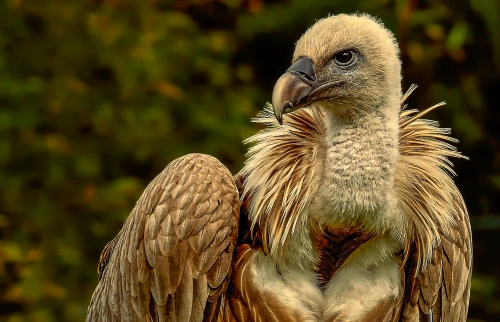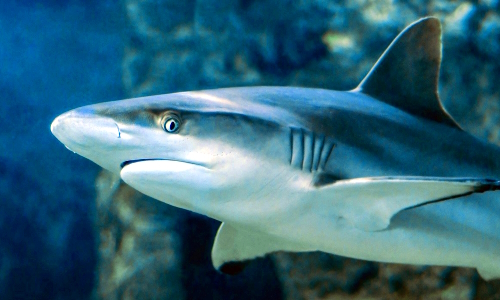Top 10 Wildlife Croatia
Brown bear: The brown bear is Croatia’s largest predator and is found in the mountainous regions of the country, such as Gorski Kotar, Lika and Velebit. These species are protected in Croatia and are considered a symbol of national heritage.
Lynx: The Eurasian lynx is a medium-sized cat that occurs in the forests of Croatia. It is an invisible animal that is difficult to see in the wild. However, it is considered an important indicator of forest health.
Wolf: is found in the mountainous regions of Croatia, especially in the Dinaric Alps. They are a protected species and are rarely seen in the wild. However, they play an important role in maintaining the stability of the environment.
>>> Our tip: Tours by bus and boat, day trips, tickets for sights, city tours, etc. are best booked on the website Getyourguide
Wild boar: Wild boar are widespread in Croatia and are found in forests and agricultural areas. They are considered wild animals and are hunted during the hunting season

Chamois: The chamois is a goat species found in the Croatian high mountains. They are a protected species and are known for their agility and speed.
Red deer: Red deer is a common species of deer found throughout Croatia. It is hunted during the hunting season and is considered an important game animal.
Griffon vulture: The griffon vulture is a large bird of prey that lives on the Adriatic coast of Croatia. They are a protected species and are known for their amazing wings and ability to fly.
>>> Forests Croatia
Youtube Video
Golden eagle: Golden eagles are large birds of prey that live in the mountains of Croatia. They are a protected species and are known for their amazing hunting skills.
Mediterranean monk seal: The Mediterranean monk seal is a rare and endangered species that lives on the Croatian Adriatic coast. It is a protected species and is known for its playful nature and unique appearance.
Dolphins: Numerous dolphin species can be found in the waters around Croatia, including the common dolphin, the bottlenose dolphin and the striped dolphin. They are a popular tourist destination and are often seen on cruises and tours.
>>> Link Tip: Tours by bus and boat, tickets for sightseeing, city walks etc. in Croatia are best booked on the website Getyourguide
>>> National parks overview Croatia
Brown bears Croatia
Brown bears are the largest predators in Croatia and are found in the mountainous regions of the country, particularly in the Gorski Kotar, Lika and Velebit regions. Here you can find more information about brown bears in Croatia.

Population – Croatia’s brown bear population is estimated at around 1,000, making it one of the largest in Europe. However, the population is still considered threatened and steps are being taken to protect the species.
Behaviour – Although brown bears are generally solitary, they may gather in groups to feed on abundant food sources such as berries and nuts. They are omnivorous and eat a variety of foods including plants, insects and small mammals. Hibernation – Croatian brown bears hibernate during the winter, usually from November to March. During this time they retreat into their dens and feed on stored fat.
>>> Flora of Croatia
Threats – The Croatian brown bear population faces many threats, including habitat loss, fragmentation and poaching. Roadkill is also a significant threat, as many brown bears are run over by cars when crossing roads in search of food.
Conservation – Brown bears are a protected species in Croatia and hunting is strictly regulated. States have taken a number of measures to protect the species, including the establishment of wildlife corridors connecting fragmented habitats, the reintroduction of food sources and the use of electric fences to prevent bears from raiding crops.
Observing – Brown bears are a popular tourist attraction in Croatia and there are several wildlife tours that offer the opportunity to see bears in the wild. However, it is important to respect the animals and their habitat and not to disturb them.
Overall, the brown bear is an important and iconic species in Croatia and efforts are being made to ensure its survival in the country. With good management and conservation efforts, the Croatian brown bear population can continue to thrive for generations to come.
>>> Our tip: Tours by bus and boat, day trips, tickets for sights, city tours, etc. are best booked on the website Getyourguide
Snakes Croatia
Croatia is home to a variety of snakes, including venomous and non-venomous species. Here you can find more information about Croatian snakes.
Types of venomous snakes – Three types of venomous snakes live in Croatia.
Horned viper, Common European viper, Meadow viper. All three are venomous, with the horned viper being the most venomous of the three.
Non-poisonous species – Besides the copperhead snake, there are several non-poisonous snakes in Croatia, including the smooth snake, the grass snake and the grass snake.
Habitat – Croatian snakes occur in a variety of habitats, including forests, grasslands and rocky areas. They are more common in the mountainous regions of the country.
Behaviour – Croatian snakes are generally shy and avoid human contact as much as possible. They are most active in the warm months from April to October.
Threats – Croatian snakes face many threats, including habitat loss, roadkill and persecution by humans. Many people are afraid of snakes and kill them on sight, even though they are not dangerous. Conservation – Croatia has implemented a number of measures to protect snake populations, such as creating protected areas and raising public awareness of the importance of snakes in the ecosystem.
Venomous snake bites – Seek medical attention immediately if you are bitten by a venomous snake in Croatia. Most hospitals in the country are equipped to treat snakebites and have antivenoms available.
Overall, snakes are an important part of the Croatian ecosystem and efforts are being made to protect them and their habitats. By respecting snakes and their role in the ecosystem, we can ensure their survival for future generations.
Dolphins Croatia
Dolphins are common in the waters around Croatia, in the Adriatic Sea. Here you can find more information about dolphins in Croatia.
>>> See also: Our page about dolphin watching in Croatia
Species – Several species of dolphins are found in the waters around Croatia, including common dolphins, bottlenose dolphins and striped dolphins. These species all belong to the dolphin family and are known for their playful behaviour and acrobatic performances.
Population – Croatia’s dolphin population is difficult to estimate, but is believed to number in the thousands. The species is not considered threatened in the region. Habitat – Croatian dolphins occur in a variety of habitats, including shallow coastal waters, offshore islands and deep waters. They are usually found in areas with abundant food sources such as schools of fish and squid.
Behaviour – Croatian dolphins are known for their playful behaviour, such as jumping out of the water, surfing waves and playing with seaweed and sticks. They are also very social animals and are often found in groups or pods.
Conservation – The protection of dolphins in Croatia is an important issue as the species is threatened by pollution, habitat loss and accidental entanglement in fishing gear. Efforts are being made to protect the species, including the establishment of marine protected areas and regulation of fishing.
Sightseeing – Dolphins are a popular tourist attraction in Croatia and there are several wildlife tours that offer the opportunity to see dolphins in the wild. However, it is important to respect the animals and their habitat and not to disturb them.
Griffon Vulture Croatia
The griffon vulture is a large bird of prey found in the mountainous regions of Croatia. Here is some information about the Croatian griffon vulture.
Population – The griffon vulture is a rare species in Croatia, with a small population in the country. The exact population size is unknown, but it is estimated that there are less than 10 breeding pairs in the country.

Appearance – The griffon vulture is a large bird with a wingspan of up to 2.8 metres. Its body is dark brown, its head and neck are white and its beak is black. Its most notable feature is its feathered jaws, which give it its name.
Habitat – Griffon vultures are found in the mountainous regions of Croatia, especially in the Velebit and Biokovo mountains. It prefers open rocky areas and can often be seen soaring over mountains.
Behaviour – Griffon vultures are scavengers, feeding on the carcasses of large animals such as goats and sheep. It has also been known to drop bones from great heights to break them and reach the marrow inside. Threats – The Croatian griffon vulture population faces many threats, including habitat loss, poisoning by pesticides and lead bullets, and collisions with power lines. In addition, this species is sometimes targeted by hunters who see them as a threat to livestock.
Conservation – Griffon vultures are a protected species in Croatia and steps are being taken to protect their habitat and mitigate the threats they face. These measures include the creation of protected areas, the removal of lead bullets from hunting areas and the use of other forms of pest control.
Sightseeing – Griffon vultures are a popular attraction for birdwatchers in Croatia. There are several wildlife tours that offer the opportunity to see species in the wild. However, it is important to respect the animals and their habitat and not to disturb them.
Sharks Croatia
Croatia is home to a variety of sharks that live in the open waters of the Adriatic Sea, in the Mediterranean Sea. Here you can find more information about sharks in Croatia.
Shark species – The most common shark species in Croatia are blacktip reef sharks, blue sharks, thresher sharks and sand tiger sharks. Other species reported from the waters around Croatia are white sharks, bull sharks and hammerheads.

Habitat – Croatian sharks occur in a variety of habitats, including coastal waters, open oceans and deep underwater canyons. They are more common in the southern Adriatic, where the water is warmer and more suitable for these species. Behaviour – Croatian sharks are generally not aggressive towards humans and only attack when provoked or when they mistake swimmers or divers for prey.
Threats – Croatian sharks face many threats, including overfishing, habitat loss and pollution. Many shark species are also targeted by fishermen for their fins, which are used in traditional Asian dishes such as shark fin soup.
Protection – Croatia has taken a number of measures to protect shark populations, such as establishing marine protected areas and regulating fishing. But more needs to be done to protect these animals and their habitats.
Shark watching – Sharks are a popular attraction for divers and snorkellers in Croatia. There are several diving trips that offer the opportunity to see these animals up close. However, it is important that the animals and their habitats are respected and not disturbed.